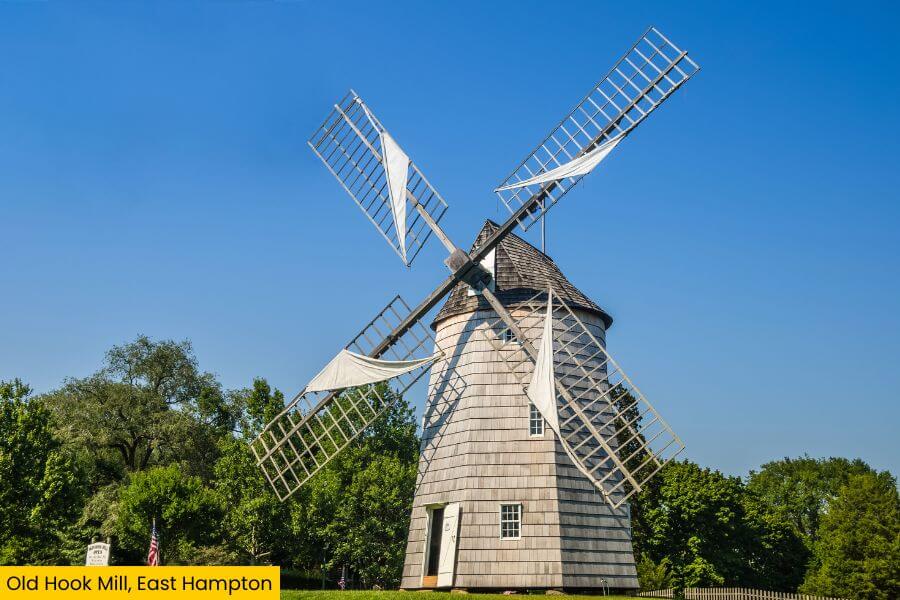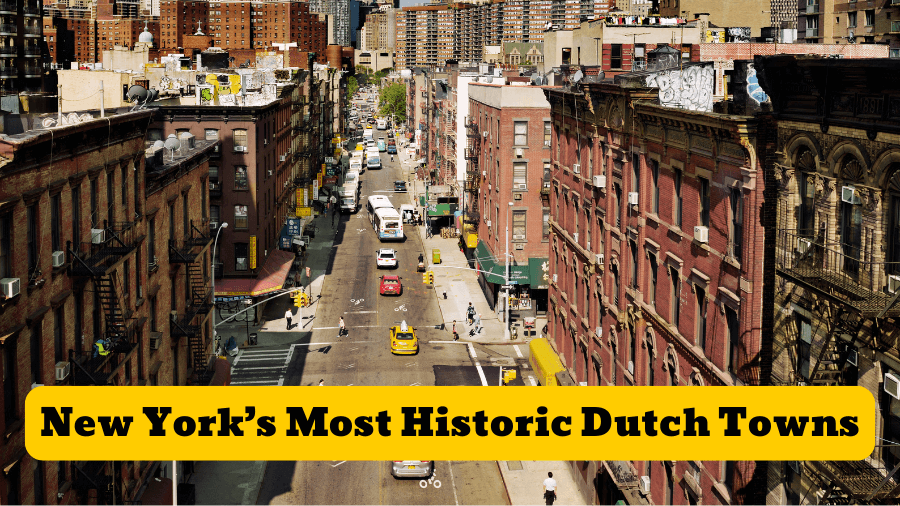If you think windmills are just for postcards and Dutch countryside daydreams, think again—because the Hamptons are packed with them.
Scattered across sleepy village greens and tucked away along quiet backroads, these historic windmills have been standing tall for over 200 years.

Some were moved (multiple times), one housed a famous playwright, and a few even powered more than just grain mills.
This road trip takes you to five of the most fascinating windmills on Long Island, each with its own wild history—so get ready.
1. Old Hook Mill, East Hampton

Old Hook Mill in East Hampton looks like it belongs on the cover of a storybook, with its towering wooden sails and weathered shingles standing tall since 1806.
You’ll find it right on North Main Street, and while it stopped grinding grain in 1908, it’s still one of the best-preserved windmills in the Hamptons.
Inside, you can check out the massive wooden gears and millstones that once turned wheat into flour—seriously, it’s like stepping into a time machine.
Fun fact: The Hook Windmill has been standing strong in the same spot since 1806—more than 200 years of wind and weather haven’t knocked it down!
2. Pantigo Windmill, East Hampton
Just a few minutes down the road, Pantigo Windmill sits quietly on James Lane, looking like it hasn’t aged a day since 1804.
Originally built by Samuel Schellinger, this historic windmill has been relocated several times before finally settling in its current spot.
The Pantigo Windmill ceased operations in the late 19th century, making it one of the earlier windmills to stop functioning in the region.
It’s got that classic Hamptons windmill look—gray cedar shingles, four massive sails, and a charming little door that makes you wonder what’s inside.
While you can’t usually go in, it’s still worth a stop for the perfect windmill photo, especially when the late afternoon light hits just right.
Please note that the windmill is not regularly open to the public, but guided tours and special events occasionally offer a chance to step inside.
3. Gardiner Windmill, East Hampton
Keep heading toward the coast, and you’ll hit Gardiner Windmill, a hidden gem tucked away on a quiet stretch of James Lane.
Built in 1804, this windmill has a cool claim to fame—it’s one of the Hamptons’ historic smock mills with a cap that could turn to face the wind.
Back in the day, this clever design helped millers keep the sails spinning no matter which way the breeze was blowing.
Now, it’s a peaceful little spot surrounded by open fields, perfect for a quick stop to soak in some history (and snap another windmill pic, obviously).
4. Beebe Windmill, Bridgehampton
Beebe Windmill in Bridgehampton isn’t just a pretty landmark—it’s one of the most technically advanced windmills of its time.
Built in 1820, it had fancy upgrades like a fantail—an automatic mechanism that kept the sails facing the wind, making the miller’s job way easier.
This windmill was later relocated multiple times, proving it had a life beyond just grinding grain.
Now, it’s back in Bridgehampton near the highway, standing tall as a reminder that wind power has always been a big deal.
5. Water Mill Windmill, Water Mill
Last but definitely not least, Water Mill Windmill sits in the only Long Island town actually named after a mill—so you know it’s legit.
Dating back to the mid-17th century, it’s part of the historic Water Mill Museum, which means you can actually step inside and see how all the giant wooden gears and grinding stones worked.
This spot has been a powerhouse (literally) for over two centuries, first as a gristmill for grain and later also serving as a fulfilling mill for wool.
It’s the perfect place to wrap up your windmill road trip, with a little bonus history and maybe even a fresh bag of locally ground cornmeal to take home.
Just a heads-up! The Water Mill Museum normally closes for the winter and usually reopens in late May, so be sure to check online before heading over.
Related Posts



